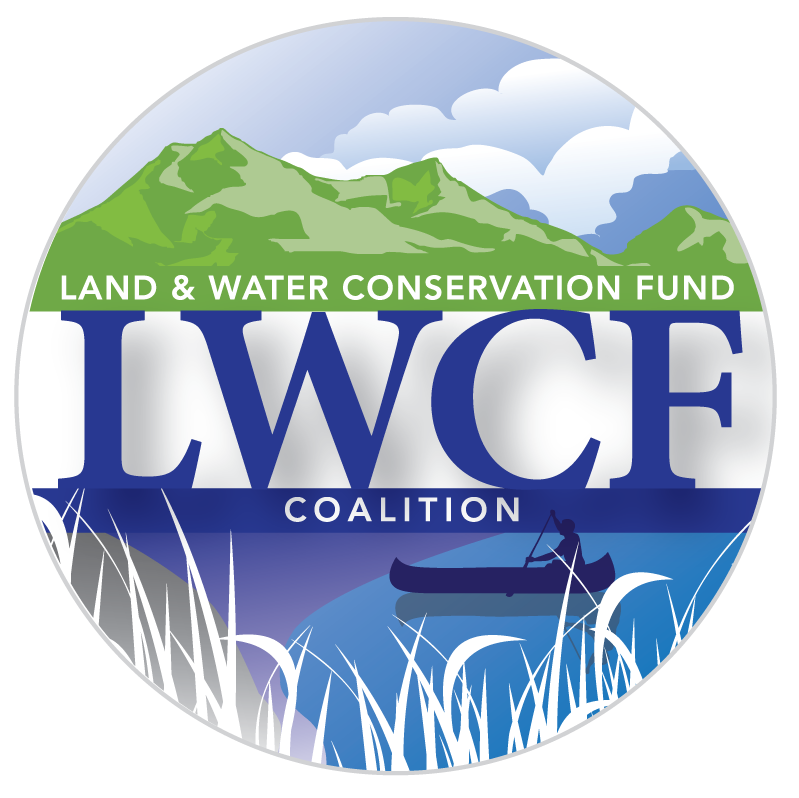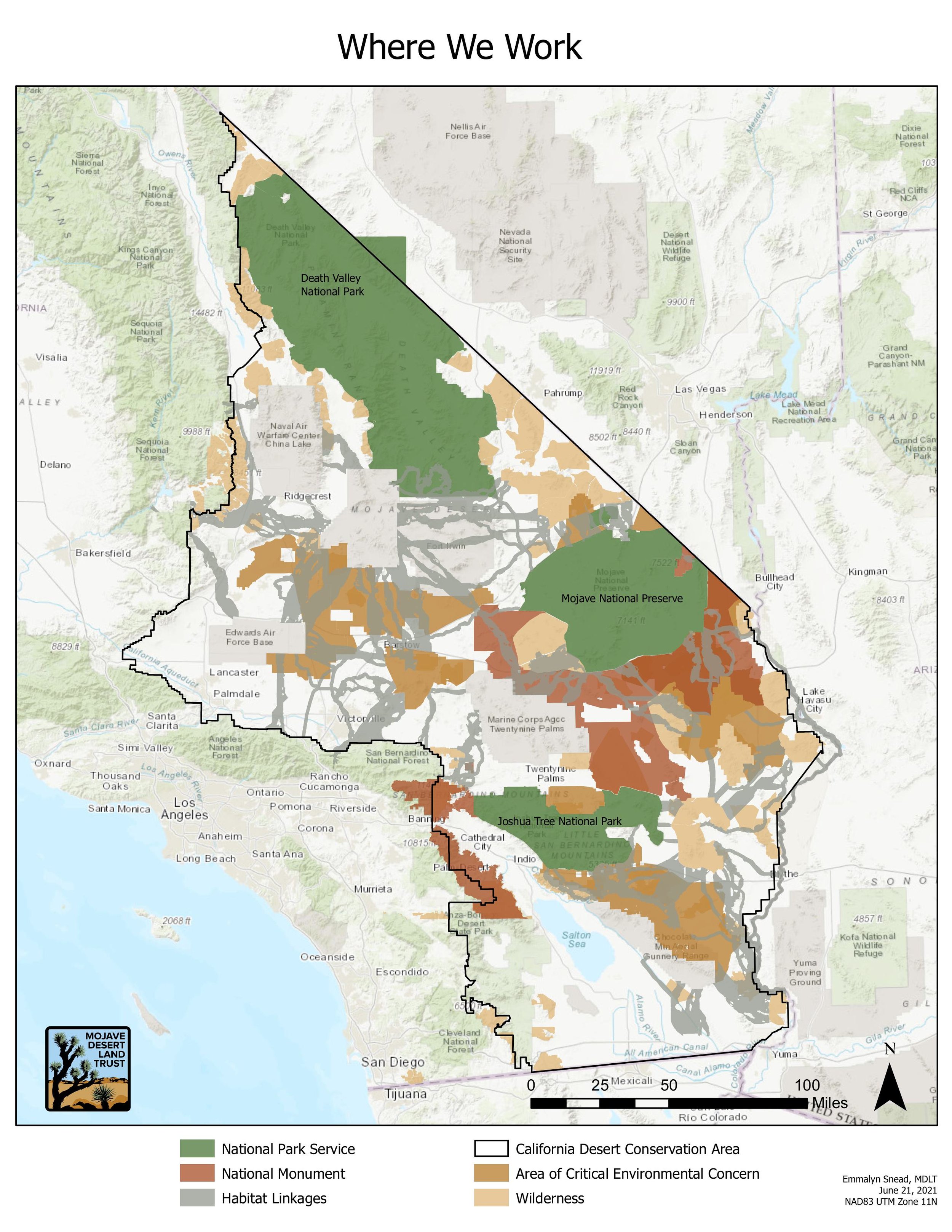Protecting California's Deserts with LWCF
All too often overlooked for their ecological value, the California’s Mojave and Colorado deserts feature stunning biodiversity, surpassing even many forest ecosystems. More than 2,400 native plant species, 72 occurring nowhere else on earth, reside in the windswept dunes, craggy mountains, life-giving waters, and other habitats that encompass the region. This landscape makes up 27% of the state’s land mass, sequesters 10% of its carbon, and is the nation’s largest relatively intact ecosystem outside of Alaska. This, however, belies the fragility of California’s deserts, which face unprecedented pressures from climate change and development.
In the last century, temperatures in the region have risen about three degrees Fahrenheit, while decreased precipitation and more frequent wildfires have pushed many species to the brink. Compounding this, development is fragmenting habitat and impeding climate refugia by disrupting the connectivity needed for species to move and giving them fewer places of retreat. For the iconic Joshua tree, catastrophic habitat loss looms. A 2019 study found that in the best-case scenario, only 19% of the species’ habitat is likely to remain at the end of the century. California’s state reptile, the Mojave desert tortoise, was uplisted to endangered status this year under the California Endangered Species Act following 90% population declines over the last 50 years.
Mojave desert tortoise on MDLT land - Photo Credit: Bruce Squires.
Hope emerged at two points in the last century.
Congress recognized the significance and threats to the desert in 1994, establishing Joshua Tree and Death Valley National Parks, the Mojave National Preserve and over 60 unique wilderness units with the passage of the California Desert Protection Act (CDPA).
Thirty years prior, the Land and Water Conservation Fund (LWCF) was created - the only federal program fully dedicated to land and water conservation and improving outdoor recreation access.
As LWCF and CDPA celebrate their 60th and 30th anniversaries, it is impossible to overstate their contributions to the landscape-scale conservation that has kept the region as intact as it is today – and their importance to the Mojave Desert Land Trust (MDLT).
As the only nonprofit dedicated to preserving the entirety of the California desert, our origins are closely tied to LWCF and CDPA. MDLT was formed in 2006 by a group of concerned citizens intent on protecting an important inholding within Joshua Tree National Park; they quickly realized there were thousands of additional parcels within our national parks and wilderness. As an intermediary, MDLT works with willing-seller private landowners to acquire important parcels that our federal partners later purchase using LWCF.
Over the past 18 years, MDLT has expanded its conservation mission to take on the desert’s greatest challenges by also restoring the fragile desert habitat, growing native plants and preserving seeds.
All the while, LWCF has remained integral to our work. LWCF has invested more than $78 million into the California desert, allowing MDLT to convey more tracts of land to the National Parks system than any other nonprofit since 2006. LWCF has enabled us to transfer 28,861 acres in Joshua Tree and Death Valley National Parks and Mojave National Preserve, and another 28,960 acres to the Bureau of Land Management in federally designated wilderness, Sand to Snow and Mojave Trails National Monuments.
The snapshots below show just how LWCF has made an impact.
Joshua Tree National Park – 7,372 Acres Conveyed
The 800,000-acrea Joshua Tree National Park is located just two hours from the major metropolitan center of Los Angeles. As one of the top ten most-visited parks in the country, it attracts millions of people annually and faces encroachment from the growing surrounding communities. MDLT made its first acquisition here in 2007 with the Nolina Peak property, a 637-acre portion of the crucial Joshua Tree North Wildlife Linkage relied upon by bighorn sheep and mule deer to traverse between the Park and surrounding habitat. This parcel was transferred to NPS in 2008. Thousands of acres of private inholdings have similarly been acquired, ensuring permanent public access to our public lands.
Other properties can be transferred to the park system in future using LWCF: The spectacular 997-acre Quail Mountain preserve bordering the park is home to critical desert tortoise habitat and has a popular community hiking trail; Samuelson’s Rocks has boulders carved with philosophies by Swedish homesteader John Samuelson. David Smith, then-Superintendent of Joshua Tree National Park, described it as “truly one of the most unique historical sites we have in the California desert.”
Mojave National Preserve – 20,625 Acres Conveyed
Mojave National Preserve, at 1.6 million acres, hosts dense Joshua tree woodlands, expansive dunes, cinder cone volcanoes, and juniper-pinyon forests with room to roam for bighorn sheep, desert tortoise, mule deer, and mountain lions. When it was established, the Preserve still had 85,000 acres of private inholdings. MDLT has acquired and conveyed a large number of these parcels that often require cleanup of former dump sites, remnant dwellings, and scattered debris. As Preserve Superintendent Ray McPhadden stated: “Mojave National Preserve was created with extensive private inholdings that were the legacy of mining, railroad, and homesteading eras. We greatly appreciate the partnership with Mojave Desert Land Trust and the work they do with the willing sellers of inholdings. This new land enhances scenery and wildlife habitat in Mojave National Preserve, and becomes part of our cherished National Park system, ensuring its protection and enjoyment for present and future generations.”
MDLT staff working to clear debris from a Mojave National Preserve inholding before conveyance to the National Park Service - Photo Credit: MDLT
Despite LWCF’s potential for landscape-scale conservation, there is more work to do.
The number of conservation and recreation projects nationwide exceeds LWCF’s funding capacity and MDLT often must hold lands for more than a decade before funds can be appropriated. While the 2020 Great American Outdoors Act (GAOA) permanently funded LWCF with $900 million annually, this amount was assessed to be the nationwide need 1978, when purchasing power was 4 times what is today. MDLT has 74 parcels totaling 4,430 acres in the pipeline and another 115 parcels totaling 7,459 acres in the near-future pipeline for LWCF conveyance. When funding is not available to capitalize on these opportunities as they come, we can lose out forever on the chance to make a National Park, National Monument, or Wilderness Area whole.
The Mojave Desert Land Trust joins the LWCF Coalition in urging Congress to provide additional discretionary LWCF funding to complement the allocations made by the GAOA. We must act now to avoid the loss of biodiversity and these natural wonders. Let’s continue to grow and support LWCF at 60 years and for the next 60, ensuring the protection and enhancement of California’s deserts and all of America’s treasured natural spaces.
Written and Prepared by Krystian Lahage, Public Policy Officer, Mojave Desert Land Trust
The Mojave Desert Land Trust is a 501(c)(3) non-profit organization with the mission to protect and care for lands with natural, scenic, and cultural value within the Colorado and Mojave Deserts. Since its founding in 2006, MDLT has conserved approximately 120,000 acres, conveying more tracts of land to the National Park Service than any other nonprofit. MDLT established a conservation seed bank to ensure the preservation of native species and operates an onsite nursery at its Joshua Tree headquarters which has grown over 120,000 native plants for restoration projects and community landscaping. MDLT educates and advocates for the conservation of the desert, involving hundreds of volunteers in our work. For more information, visit mdlt.org.





